In Part One of the September Patch News I explained that I would be away on holiday at the end of September and beginning of October so would miss the first flights of the models built for the Kline-Fogleman challenge. Well I’m back now and all the models have been flown, so here’s Part Two to tell you all about it.
First a quick recap of the rules: The wingspan had to be no more than 36”, the wing had to have a Kline-Fogleman wing section, and the model had to be a fun fly design with high wing.
So what is a Kline-Fogleman wing section? Well this is what Wikipedia says: The Kline-Fogleman airfoil or KF airfoil is a simple airfoil design with single or multiple steps along the length of the wing. It was originally devised around 50 years ago for paper airplanes. In the 21st century the KF airfoil has found renewed interest among hobbyist builders of radio-controlled aircraft, due to its simplicity of construction. The airfoil was designed by Richard Kline & Floyd Fogleman.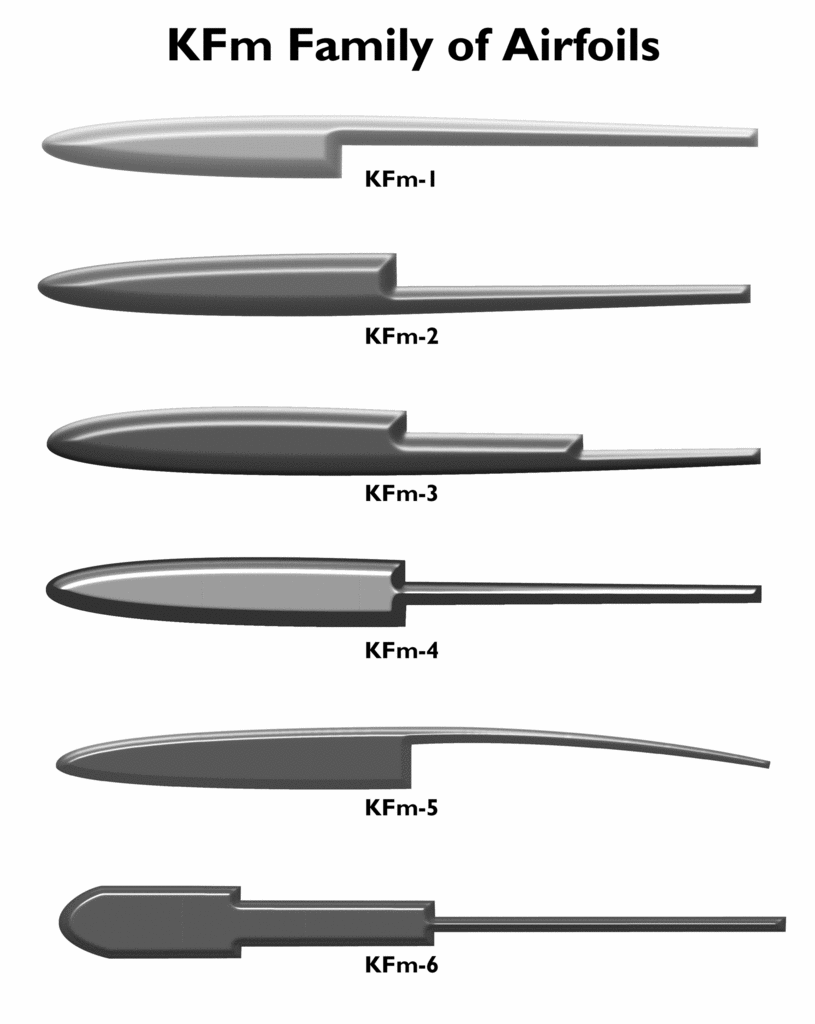 Seven models were brought along to the club meeting on 22nd September where everybody was able to vote for their favourite in three categories and the winners were: Best Looking – Andy Palmer (obviously but what about the plane?!). Most Original – Tim Clay. Least Likely to Fly – Mark Agate.
Seven models were brought along to the club meeting on 22nd September where everybody was able to vote for their favourite in three categories and the winners were: Best Looking – Andy Palmer (obviously but what about the plane?!). Most Original – Tim Clay. Least Likely to Fly – Mark Agate.
There was a very wide range of models, some totally scratch built, others modified from existing models. I’m a bit short of info on a couple of the models and I can only pass on the details that are either given to me or I can discover for myself. I’ll start with mine as I know loads about it!
I called mine Euro Fun-Fighter as a bit of a wind-up in these Brexit days, but oddly it’s shrunk by almost 20% since 23rd June! It’s a very basic all Depron, 3D style, profile fuselage model.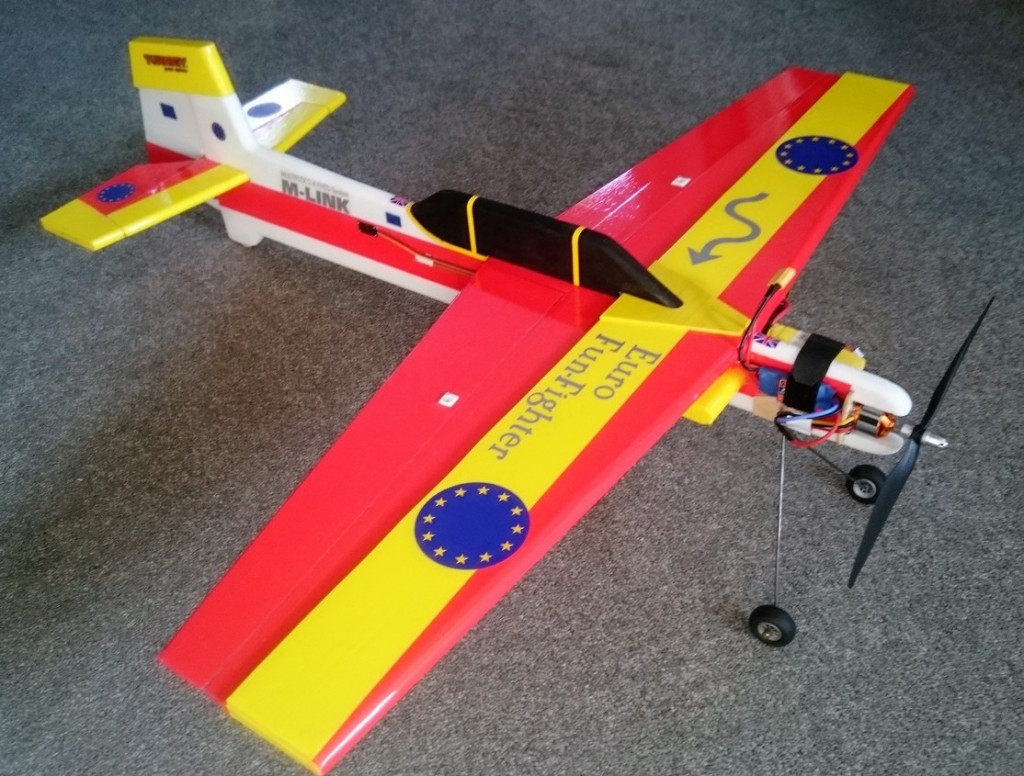 The Depron was all from a single 6mm thick sheet as obtained by 1066. The fuselage is simply 3 laminations of Depron cut to shape and incorporates the fin. The wing is 3 laminations but steps down to a single thickness at around 40% of the chord, with a step top and bottom, a KFm4 section. There is a spruce spar at the underside step position to provide some strength. The ailerons simply continue the wing in a single thickness. The tailplane is 2 laminations thick but the elevators are single thickness except at the tips where 2 thicknesses provide stiffness and match the tailplane. The rudder is single thickness but has 3 laminations at the top to provide the necessary stiffness and to match the fin.
The Depron was all from a single 6mm thick sheet as obtained by 1066. The fuselage is simply 3 laminations of Depron cut to shape and incorporates the fin. The wing is 3 laminations but steps down to a single thickness at around 40% of the chord, with a step top and bottom, a KFm4 section. There is a spruce spar at the underside step position to provide some strength. The ailerons simply continue the wing in a single thickness. The tailplane is 2 laminations thick but the elevators are single thickness except at the tips where 2 thicknesses provide stiffness and match the tailplane. The rudder is single thickness but has 3 laminations at the top to provide the necessary stiffness and to match the fin.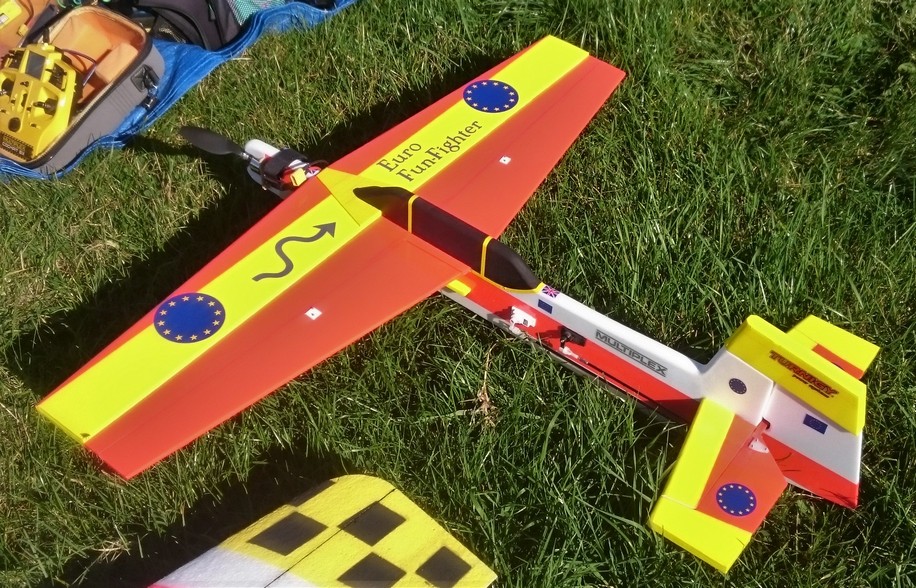 The power train is exactly the same as in the HobbyKing Hummer, a Turnigy 2830/11 1000kv motor fitted with a 10×4.5 prop powered by a 3 cell lipo of either 1000 or 1300mAH. I fitted a 30A esc which is much larger than is required but the cost and weight difference is minimal, and it’s more likely to be useful in the future.
The power train is exactly the same as in the HobbyKing Hummer, a Turnigy 2830/11 1000kv motor fitted with a 10×4.5 prop powered by a 3 cell lipo of either 1000 or 1300mAH. I fitted a 30A esc which is much larger than is required but the cost and weight difference is minimal, and it’s more likely to be useful in the future.
I decorated/covered the wing and tail with some HK Wing Tape that I won in the raffle and painted the ‘cockpit’ with black acrylic paint. With the addition of a few stickers I had kicking around I think it looks quite smart.
Dougal Entendre’s model is a real ‘bitzer’ and can hardly be described as fun fly style but who cares. The fuselage and V tail were built to replace the broken foam parts of his Spirit and normally flies with the original Spirit wing fitted. Dougal calls it Vignette and it’s built from balsa and ply and it’s fitted with Wingnetic motor, speed controller, and prop. It flies absolutely brilliantly and I covered it more fully in the August Patch News.
For the Kline-Fogleman Challenge Dougal used the Vignette fuselage and tail but built a new wing with the Kline-Fogleman stepped section. I’m happy to report that despite winning Least Likely to Fly it does!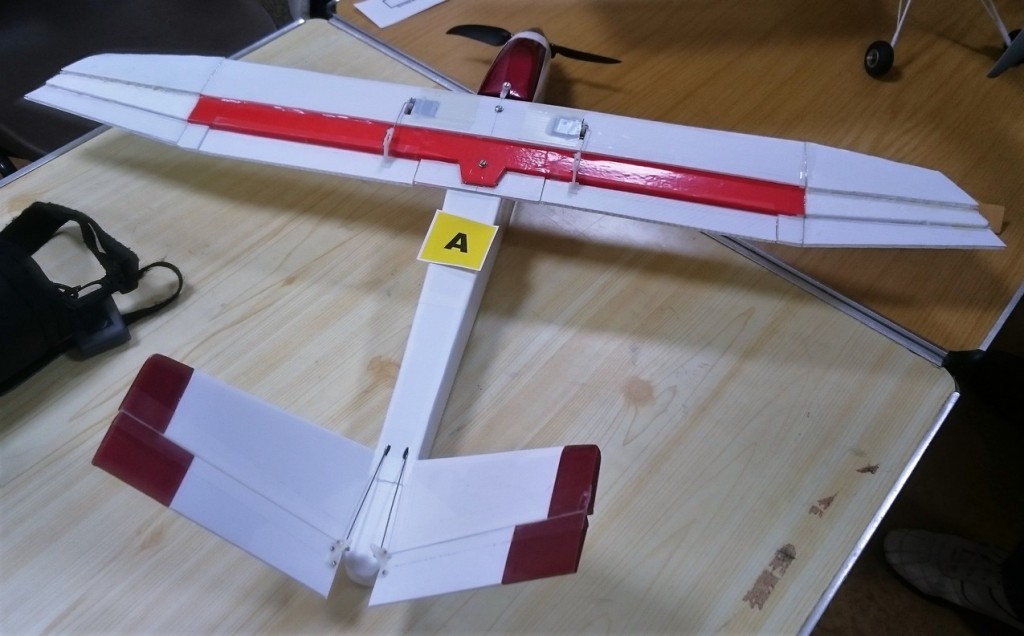 This is how he describes the wing construction: The wing is 3 sections of 1/8″ Correx folded back over 1/8″ thick other stuff: 1/8″ ply (in about the centre 4″), balsa (outboard of the ply), or Depron (tip sections). I was going to put carbon spars in it, but it came out heavier than the Spirit wing and seemed pretty strong anyway, so I didn’t bother. So there you have it, it’s simply a Spirit with a different fuselage, tail, wing, and motor!
This is how he describes the wing construction: The wing is 3 sections of 1/8″ Correx folded back over 1/8″ thick other stuff: 1/8″ ply (in about the centre 4″), balsa (outboard of the ply), or Depron (tip sections). I was going to put carbon spars in it, but it came out heavier than the Spirit wing and seemed pretty strong anyway, so I didn’t bother. So there you have it, it’s simply a Spirit with a different fuselage, tail, wing, and motor!
Kryten (I’m watching Red Dwarf on TV as I’m writing this!) should have got a special award for the longest build as he’d started his model back in 1968. The fuselage and tail are a Pal Joey, a Bill Winter design that was published in RCM&E in December 1963.
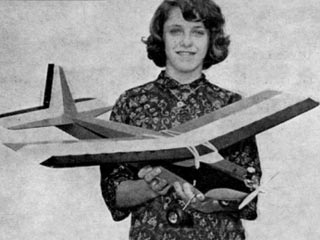
 This is what Kryten says about it: I started building in 1968 but the model was never completed but I kept it “just in case”!! When the club build was announced I decided to resurrect it and put on a KF Depron wing. The original model had a 42-inch wingspan with 7-inch chord. I decided, as it would be relatively heavy compared to an all foam model, to construct a KF-3 wing section with an 8-inch chord resulting in a similar wing loading to the original.
This is what Kryten says about it: I started building in 1968 but the model was never completed but I kept it “just in case”!! When the club build was announced I decided to resurrect it and put on a KF Depron wing. The original model had a 42-inch wingspan with 7-inch chord. I decided, as it would be relatively heavy compared to an all foam model, to construct a KF-3 wing section with an 8-inch chord resulting in a similar wing loading to the original.
The wing was constructed using 6mm Depron with wing tape applied to the outer surface (Experimental Airlines technique described on YouTube) and then folded along the leading edge.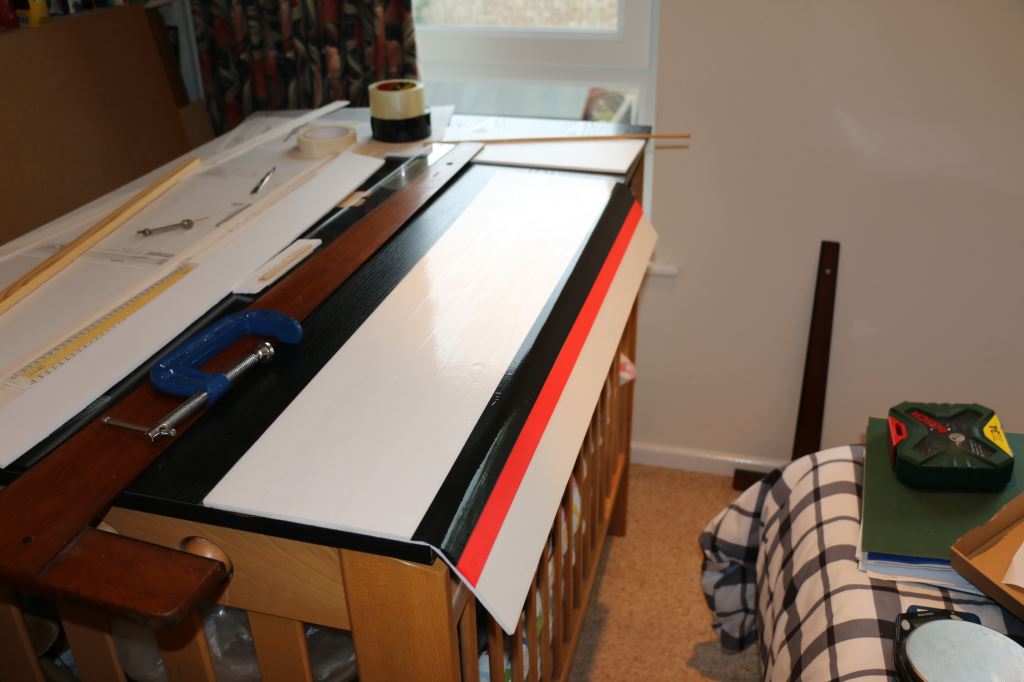 I incorporated two wing spars made up of a Depron core with balsa top and bottom. It was all glued with Gorilla Glue and made the wing nicely rigid whilst also giving enough thickness to accommodate the two HXT900 servos and their leads.
I incorporated two wing spars made up of a Depron core with balsa top and bottom. It was all glued with Gorilla Glue and made the wing nicely rigid whilst also giving enough thickness to accommodate the two HXT900 servos and their leads.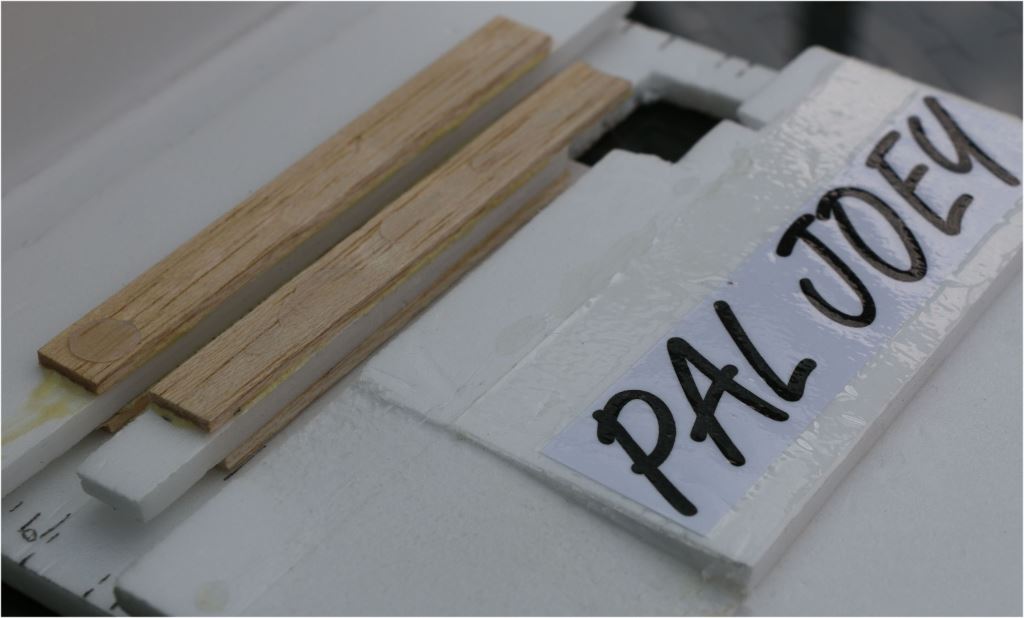 I converted it from single channel rudder control to aileron, rudder and elevator and replaced a 1cc “Quickstart” IC with an E-Max GT series 2815-06 motor from BRC with 9×6 prop, a 40amp Turnigy ESC and an 1800 Zippy Compact battery. So it’s a real mixture of old and new but as the Kline-Fogleman sections were first tried around 50 years ago it’s actually spot on correct.
I converted it from single channel rudder control to aileron, rudder and elevator and replaced a 1cc “Quickstart” IC with an E-Max GT series 2815-06 motor from BRC with 9×6 prop, a 40amp Turnigy ESC and an 1800 Zippy Compact battery. So it’s a real mixture of old and new but as the Kline-Fogleman sections were first tried around 50 years ago it’s actually spot on correct.
1066 built a model from scratch and rather oddly he built a balsa fuselage and then covered it in Depron. Presumably it has a square balsa box and the Depron gives the shape.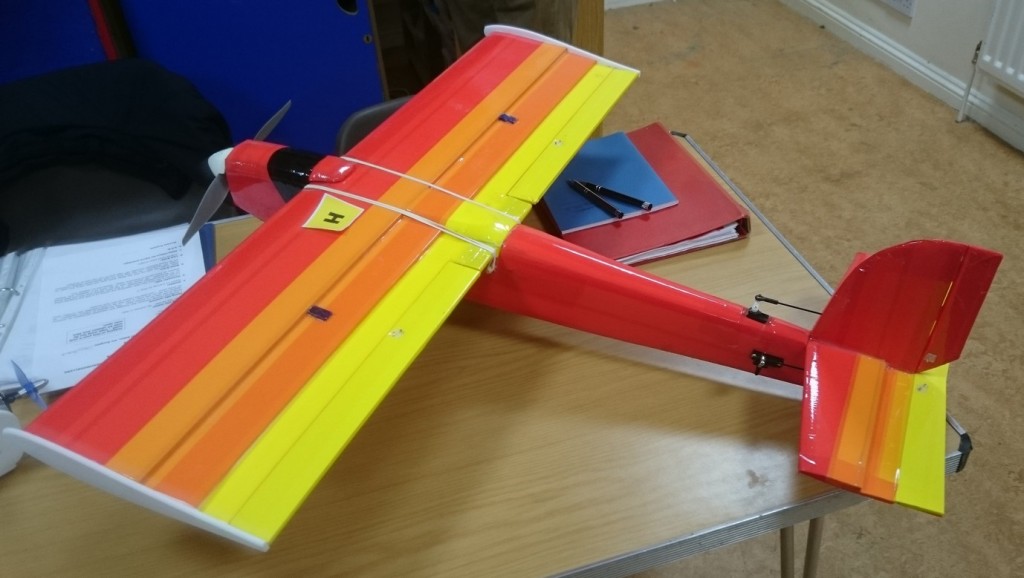 The wing is all Depron but has pine spars for rigidity and two KF steps, 1066 describes it as a KF3 Plus, not sure what the Plus part is. The tailplane is also made from Depron and has a KF step, just one. The whole model is covered in red, orange and yellow wing tape. For power he fitted a NTM 3528 1200Kv motor, a 2200 3s lipo, and a 50 Amp speed controller.
The wing is all Depron but has pine spars for rigidity and two KF steps, 1066 describes it as a KF3 Plus, not sure what the Plus part is. The tailplane is also made from Depron and has a KF step, just one. The whole model is covered in red, orange and yellow wing tape. For power he fitted a NTM 3528 1200Kv motor, a 2200 3s lipo, and a 50 Amp speed controller.
Another scratch built model came from Percy Vears. It’s another Depron one with just a few pieces of ply, dowel, and carbon rod to provide the necessary strength.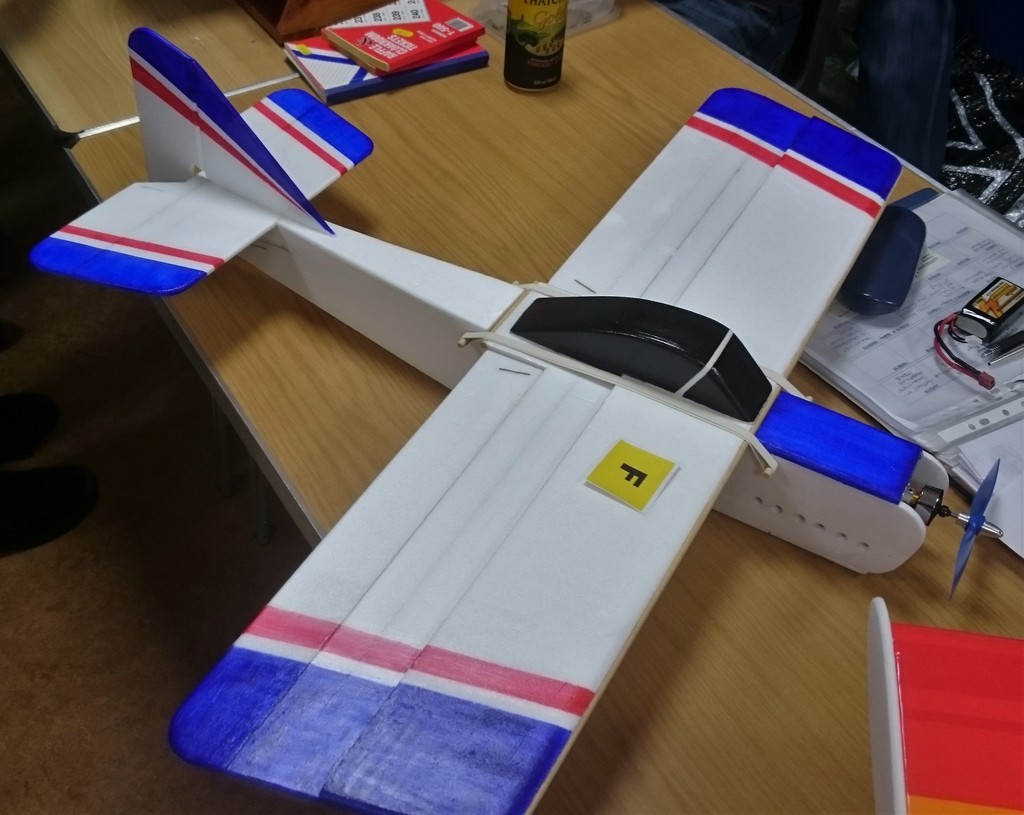 The wing is 34” span and has a KF2 section, which means it has one step on top of the wing. The motor is a 2208 2150kv which is coupled to a HobbyKing 20A speed controller with a 3A UBEC and Percy uses a 3 cell 1000mAH lipo.
The wing is 34” span and has a KF2 section, which means it has one step on top of the wing. The motor is a 2208 2150kv which is coupled to a HobbyKing 20A speed controller with a 3A UBEC and Percy uses a 3 cell 1000mAH lipo.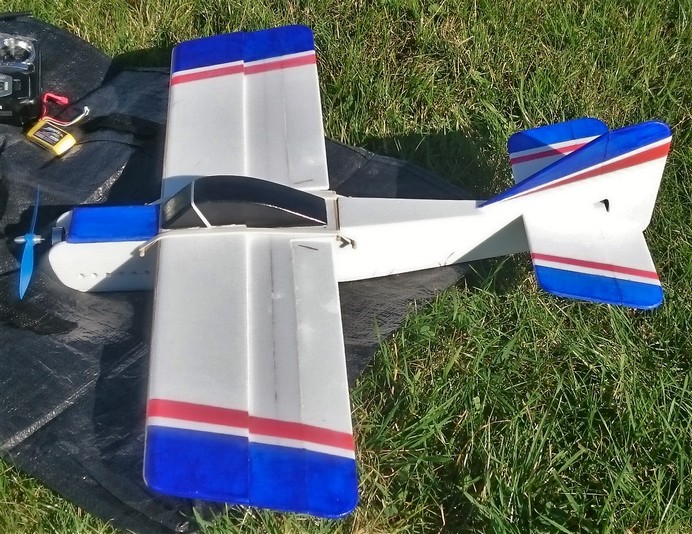 Unusually these days the model only has one aileron servo, along with the normal rudder and elevator ones. All three are HobbyKing TG9Zs. The finished model is extremely light at just 280g (around 10ozs) without the battery.
Unusually these days the model only has one aileron servo, along with the normal rudder and elevator ones. All three are HobbyKing TG9Zs. The finished model is extremely light at just 280g (around 10ozs) without the battery.
Modelling Clay’s model has a balsa and ply fuselage which he based on a Wot4, and it has a homemade undercarriage. He built a Depron wing with carbon spars and balsa leading and trailing edges. It has two steps on the top of the wing so I think it’s a KF3.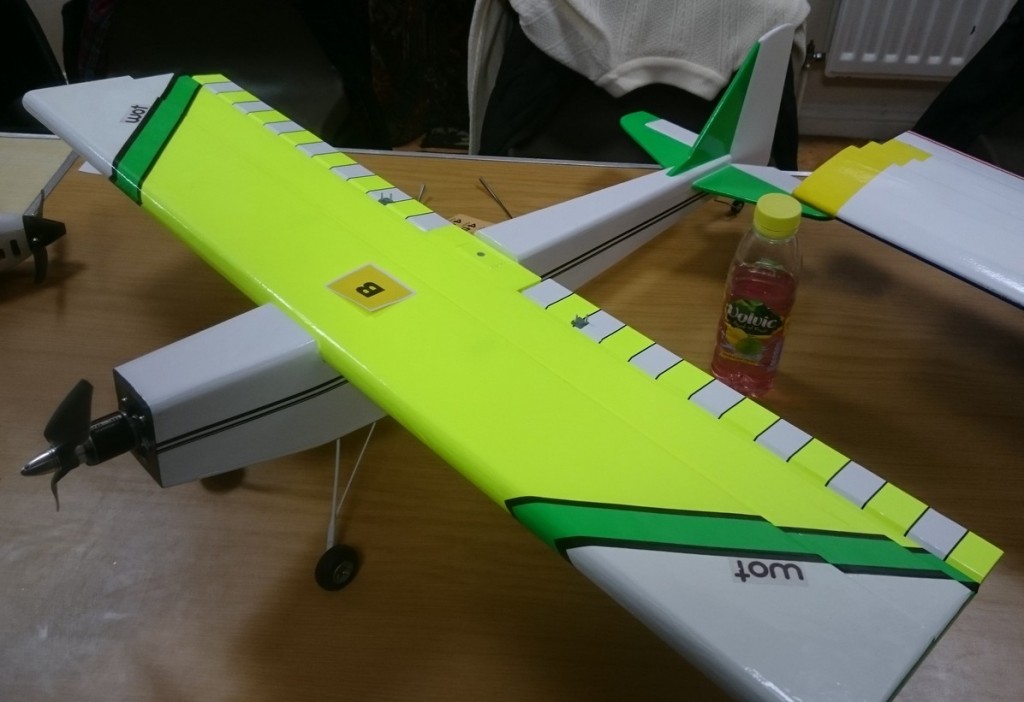 He fitted an NTM Prop Drive 2836 1400kV motor and a 40A speed controller and a 9×5 prop. Battery is a 30C 1800mAH 3 cell lipo. The whole model is covered in Solarfilm and looks very smart. I think the whole model is basically a scaled down Wot4.
He fitted an NTM Prop Drive 2836 1400kV motor and a 40A speed controller and a 9×5 prop. Battery is a 30C 1800mAH 3 cell lipo. The whole model is covered in Solarfilm and looks very smart. I think the whole model is basically a scaled down Wot4.
Tony Neal had built a Big Stick from a HobbyKing laser cut kit and then made an alternative Depron wing with two steps. The Depron is brown paper covered and then sprayed but the fuselage and tail are covered in some HobbyKing film.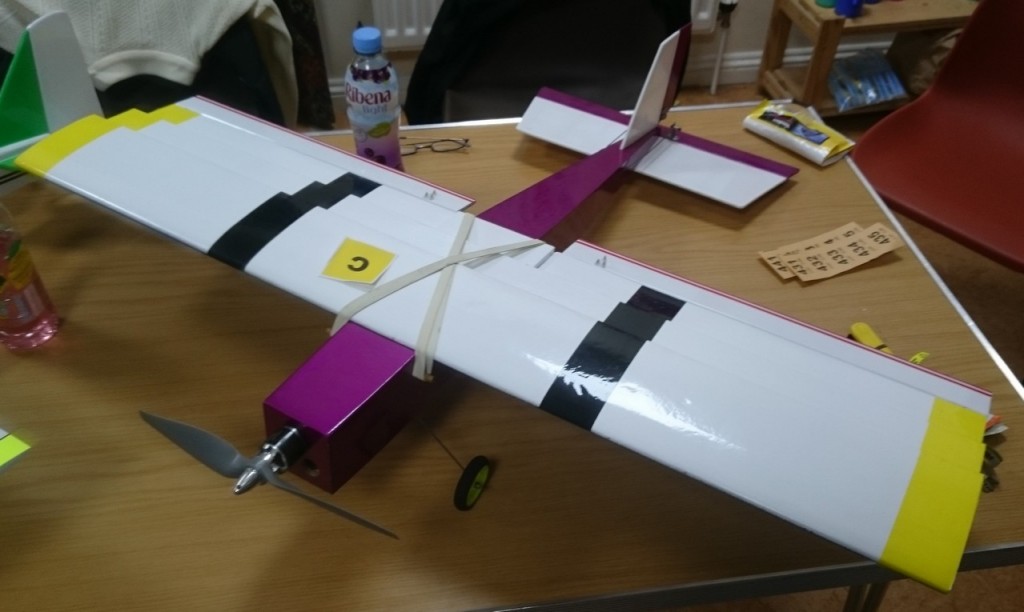 I believe the motor is an NTM Pro Drive 2826 1200KV that swings a 10×5 prop and it’s powered by a 3 cell 2200mAH lipo pack. On the video below you can hear Tony saying the model flies better with the original wing than it does with the KF one.
I believe the motor is an NTM Pro Drive 2826 1200KV that swings a 10×5 prop and it’s powered by a 3 cell 2200mAH lipo pack. On the video below you can hear Tony saying the model flies better with the original wing than it does with the KF one.
As things turned out, the Friday morning following the club meeting was perfect weather for test flying and, as I wasn’t going on holiday until after lunch, I decided to fly my model in the morning. I didn’t intend to spoil a mass test session on the Sunday but both Percy and Kryten brought theirs along as well so I test flew all three. The remaining four models were all test flown the following Sunday as originally planned. Fortunately Captain Slow was able to be present on both days and he filmed all seven test flights so the whole of the following video was all taken by him, something for which I’m very grateful, thanks John.
Please watch the video full screen, it’s so much better with small models flying around. If the video above won’t play for you CLICK HERE
While Captain Slow was filming on the Friday Kryten took a few flying shots of the first flights of two of the three that were flown. He uses a proper camera, not a mobile phone so they‘re of excellent quality, so a big thanks for those Graham.
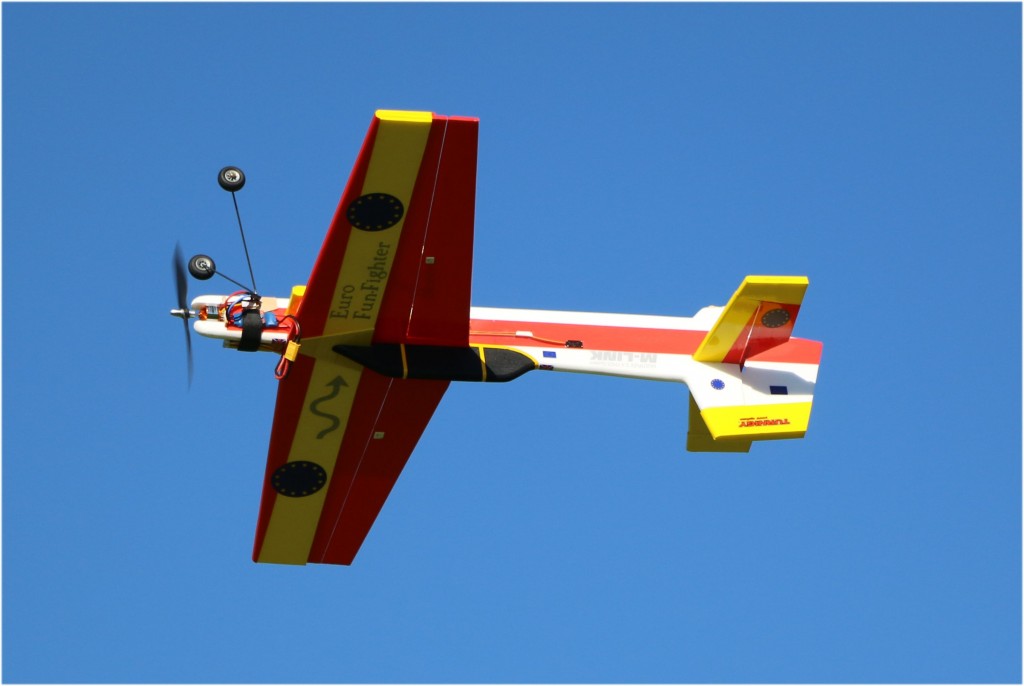
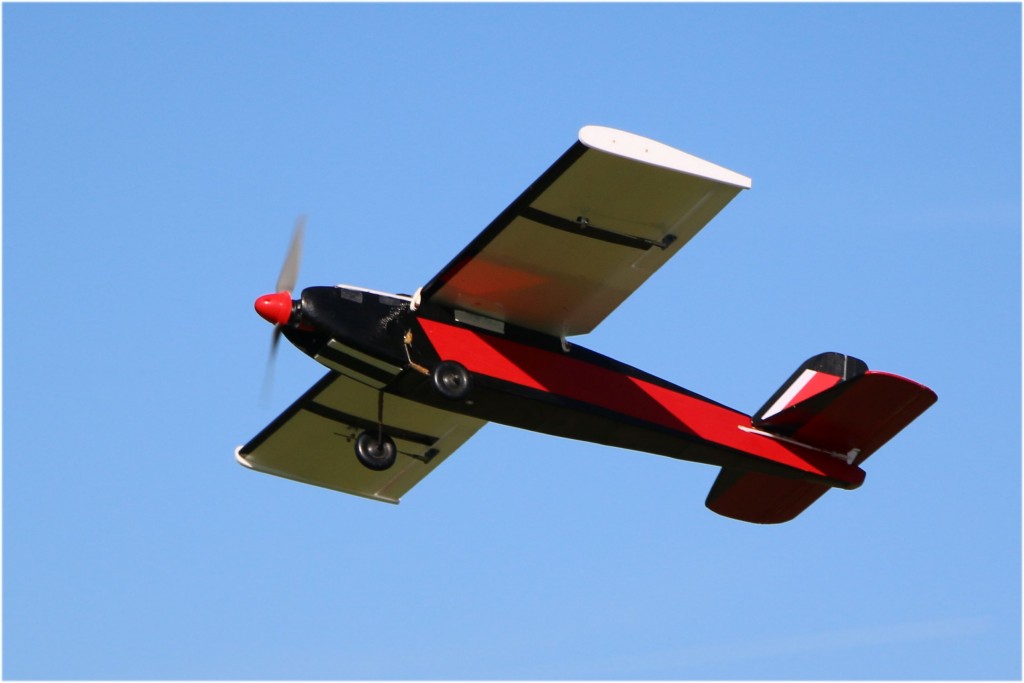 Unfortunately he wasn’t able to make it on the Sunday so I don’t have any stills of those.
Unfortunately he wasn’t able to make it on the Sunday so I don’t have any stills of those.
Q. What do pilots use for birth control? A: Their personality.
Colin Cowplain


That’s real dedication Colin, writing two Patch Newses in one month! A great effort by Captain Slow doing the videos too. I guess the tension of the competition must have contributed to his heavy breathing on the soundtrack!
At Captain Slow’s age almost any sort of excitement gets him breathing heavy!
Nice work as always Patsie, the plus is another step on the underside of the wing, bit like a semi.I will leave it there for Dougal to ponder, he won’t be able to help himself.
Oh, just one step on the underside, not two to match the top ones? I’ll ignore the semi… 😉
What our esteemed blogger has failed to mention in his report is the condition in which his Euro Fun Fighter was taken home. It is unfortunate that I wasn’t filming this flight but then he would probably have edited out. As to the heavy breathing: the original doesn’t contain any; neither is there any camera shake; but let’s not let the truth get in the way of a good storey.
The blog only covers the first flights of the models, I snapped the nose off on the third one! Simple repair and it’s had several flights since 🙂
I didn’t dub in heavy breathing and camera shake! I did switch Stabilisation on and decided it was better but I can turn it off if you’d prefer…
He’ll be claiming you edited in the spelling mistake next… (*story).
Haha, good one Dougal! Would chat longer but I’m just off flying…
I’ve joined the 1066 school of English language:)
I can’t help my poor edification
Gentlemen…. I was thrilled to discover your video of the KF airfoils on your RC aircraft. They flew beautifully. Believe me, it put a big smile on my face. Thank you for that.
~ Dick Kline The K in KF
Wow, it’s fantastic to hear from you Dick! It’s excellent to know you approve of all the guys efforts, thanks for taking the trouble to watch the video and comment for us 🙂
Colin… It was amazing to watch near the end of the video where the 1066 just hung in the sky barely moving. There was no sign of a tip stall. Just flat and hanging on a string.
~ Dick
How do you find the handling of the KF versus a conventional wing?
It was a pretty windy day when 1066’s model was filmed hanging almost stationary but yes it performs very well and doesn’t ever seem to tip stall.
The first 3 models were filmed on an almost dead calm day and they all seemed to land slowly with no problems. I was most surprised by Kryten’s model (8 minutes into the video) as I thought it felt very heavy for the wing area. I was sure it would have to fly fast but it was fine at low speeds. Kryten said he chose the KF-3 for it’s high lift qualities and it seemed to work well.
Colin….
I thought you might enjoy watching this KFm3 Flying Fortress. It puts you right inside the cockpit. It also has a KFm2 on the tail section. This builder has made flying buses as well.
https://youtu.be/gO3WmmR_0-Q
~ Dick
So glad we put a smile on Dicks face with our efforts,in my case I have deviated from the original designs by adding a step on the underside of a KF3, no real technical reason for this, I just thought it would create a kind of semi symmetrical section, and it also added a bit of strength.I was not surprised that the model flew, the KF3 is well tested and proven,and i suspect the extra bit didn’t add a lot, but I was surprised how well behaved the model is, I can chuck it around as well as any high wing fun fly I have owned in the past, but as you mentioned Dick, it also has a very uneventful stall, I don’t know if the inverted KF1 on the tail plane has got anything to do with that! I am making a few changes, it needs a bigger rudder and some cooling as the battery and speed controller get a bit hot in their depron coat, when that is done I will use the model as my winter hack.
I like the B-17 Dick, although it looks like it’s had a hard life! Seems a bit odd to have motors in the outer nacelles instead of the inners but it flew well anyway, must all be due to the KF section! The on-board shots are great 🙂